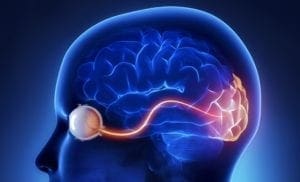 Some of us are glued to our phones, tablets or computers every waking moment. And we’ve all heard people say how too much display time is bad for you.
Some of us are glued to our phones, tablets or computers every waking moment. And we’ve all heard people say how too much display time is bad for you.
There are healthy levels and ranges of blue light. Studies show that blue light helps alertness during the day and is essential for cognitive functions.
However, a growing body of research, referenced by Eyesafe.com, connects the impact of blue light exposure to disrupted natural sleep cycles and suggests an array of potential related health issues.
Totally avoiding evening screen time is impractical for many of us. Dell thinks it has a solution.
At the Computex Taipei trade fair, Dell announced select models of its new lines of premium and gaming notebooks – including models from its Alienware, G-Series and XPS lines – will be equipped with new Eyesafe displays.
These displays have met low blue light requirements, earning a low blue light certification from TÜV Rheinland, an internationally-recognized German-based technical inspection and certification association.
“I am pleased to receive on behalf of the entire Dell team this certification from TÜV Rheinland. We believe that our new products with Eyesafe display will set a new bar for our industry,” said Ray Wah, senior vice-president for Dell Small Business and Consumer Product Group. “Customers for Dell’s high-performance lines are among the most demanding in the industry, and we are excited to bring this innovation in display to Alienware, G-Series and XPS.”
The Eyesafe technology was developed by a team of eye doctors, engineers and scientists with decades of experience in electronics, display materials and light management.
According to Dell, the beauty of the Eyesafe technology is it intelligently manages in-display high-energy visible blue light while maintaining colour performance. It emits 29 per cent less blue light but the change is totally transparent to the user. This is accomplished by the display redesigning the light at the hardware level rather than having to do it at a software level, which could impact the colour gamut.
A comprehensive study from PEC University in India on blue light exposure found benefits of using the Eyesafe displays over a standard LED screen. Some of these include enhanced mood, sustained attention (action time task), short term memory (verbal memory task), and active memory (visual memory task).
Screen time is inevitable. Anything that can reduce the probability of eye damage and not disturb a good night’s rest is a good thing.
We’ve seen the evolution of monitors – high-res, high-def, flicker-free, anti-glare and now low blue light. It will be interesting to see how quickly the entire industry heads in this latest direction.
Troy Media columnist Greg Gazin, also known as the Gadget Guy and Gadget Greg, is a syndicated veteran tech columnist, communication, leadership and technology speaker, facilitator, blogger, podcaster and author. Reach him @gadgetgreg or at GadgetGuy.ca.
The views, opinions and positions expressed by columnists and contributors are the author’s alone. They do not inherently or expressly reflect the views, opinions and/or positions of our publication.




